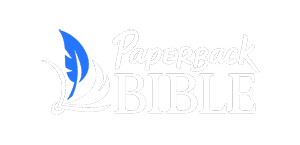Our service is a classic worship service in the tradition of Reformed (or Presbyterian) Protestantism. Given the diversity of styles of worship today, what we do is unfamiliar to many of our visitors. We offer the following information as an aid in understanding the meaning of each part of the service.
The Setting of Our Worship
The architecture and furnishings of a church building may either reinforce the congregation’s message or detract from it. Our church building is a gift to us from past generations, and is a classic example of the architecture of Reformed Protestantism. The exterior “looks like a church,” which we see as a positive virtue. It tells the onlooker that this is a house of worship, not a bank, or theater, or a retail outlet. The interior displays beautiful craftsmanship employing the finest materials. Yet notice the absence of religious art: no pictures, statues, or religious symbols. The architectural focal point, the pulpit, underscores our theological conviction: the word of God takes the central place in our worship without competition from extraneous visual stimuli. More broadly, decorative simplicity aids worshipers in giving their undistracted attention to the three primary means of grace (i.e. growth): the word, sacraments, and prayer. The pews are placed as they are in order to gather the congregation around the pulpit, baptismal font, and the Lord’s Table.
The Elements of Our Worship
Our worship is simple, consisting of the few biblical elements that God has commanded. Our approach to worship means that:
- We read and preach the Word – Approximately a chapter is read in each service in addition to the portion upon which the sermon is to be based. Normally our sermons are sequential, verse-by-verse expositions of whole books of the Bible.
- We pray the Word – Our prayers are filled with the praises, the confessions, and the promises of Scripture. We offer a full-diet of prayer in each service.
- We sing the Word – We incorporate at least one metrical Psalm (the biblical Psalms translated and rhymed for singing) in each service. We also sing biblically rich hymns.
- We receive the Visible Word – The sacraments of baptism and the Lord’s Supper are the word of God made visible and perceivable by our senses.
The Order of Worship
The design of our worship, both morning and evening, is driven by what one might call “gospel logic.”
- A cycle of praise (call to worship / prayer of praise / hymn / Gloria Patri / Creed); is followed by…
- A cycle of confession (recitation of the Law of God / confession of sin / assurance of pardon / collection); which is followed by…
- A cycle employing the means of grace (intercessory prayers / sacraments / Scripture reading / sermon); which is followed by…
- A cycle of thanksgiving and blessing (concluding hymn / benediction)
This is essentially the pattern of Isaiah 6, the Lord’s Prayer, and the gospel itself. In knowing the true God (in praise), we know ourselves (as sinners), our need (for grace), and give thanks for His gifts in Christ. Sometimes each element is distinct. Sometimes they are combined (as in the morning “pastoral prayer,” where confession, pardon, and supplication are together in a “great prayer”).
The end result, we trust, is a well-ordered worship that is in “spirit and truth” (John 4:23), conducted with “reverence and awe” (Heb 12:28), and characterized by both emotional discipline and holy joy (Ps 2:11; 1Co 14:32,40).















